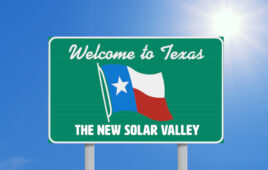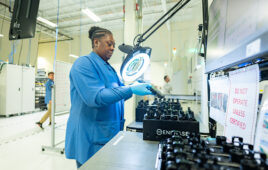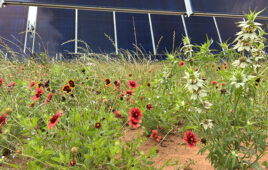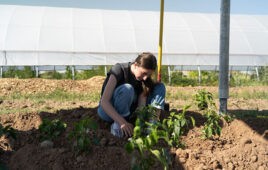Carlson Electric operates in one of the more frigid markets in the country, installing solar in Northwest Wisconsin and just over the border into Northeast Minnesota. The heavily rural community isn’t a burgeoning market and requires some creativity when working with certain clients.

Carlson Electric
“I believe it’s more relationship-focused here,” said Tim Dilley, director of business development for Carlson Electric (No. 366 on the 2021 Top Solar Contractors list). “Who you know, what you know, how well you’re taking care of people. It’s a salt of the earth kind of market — you give a handshake; you do what you say.”
Come winter, solar installations slow down. That allows contractors to take more time on each project, which is especially helpful for ones that can’t be financed using traditional methods. That extra time was vital in bringing a 120-kW solar system to the affordable housing buildings managed by Nancy Mercer at the Sawyer County Nonprofit Housing Development.
Mercer previously worked at the county’s housing authority for 15 years, and in that time, solar was often discussed as a way to reduce electrical costs for the tenants in affordable housing. These elderly tenants are often living on fixed incomes, so reducing costs for them is part of the job, Mercer explained. She carried that ambition to install solar with her to Sawyer County Nonprofit.
Coincidentally, the complex Mercer previously managed was just across the street from one of her current properties, and the housing authority eventually added solar to the rooftop of that building. Carlson Electric handled that project, and during installation, Dilley and Mercer connected and began planning for PV on Sawyer County Nonprofit properties.
The first step was figuring out funding for a project like this. The physical installations didn’t pose a challenge, barring inclement weather, but complications often arise when trying to install solar for nonprofit organizations like Mercer’s. Not to mention there were different interconnection requirements across the three properties where she hoped to have solar installed.
To handle the complex financing, Carlson Electric teamed with Legacy Solar Co-op, a Wisconsin-based organization that formed in 2014 when there wasn’t an institutional loan program to finance solar in the state. One of the services Legacy Solar Co-op offers is peer-to-peer loans for solar projects with nonprofits.
“We’re in the business of matchmaking,” said Kurt Reinhold, president and CEO of Legacy Solar Co-op. “We match community institutions that want to do solar and connect them with members of the community that aren’t Wall Street investors but just want to support solar, or in this case, seniors, and help them reduce their electric bills.”

Carlson Electric
With the assistance of Legacy Solar Co-op’s consultants, Carlson Electric earned a solar module endowment from Renew Wisconsin’s Solar for Good program and received financial incentives from Focus on Energy, a group that works with state utilities to incentivize energy-efficient developments. Together, that covered about $55,000 of the project. Then, Legacy Solar Co-op members purchased bonds to raise a $65,000 loan, and another individual member covered the remaining cost.
Solar was built across six multifamily buildings on three different properties in Hayward, Winter and Radisson. The total project cost $255,000, with Sawyer County Nonprofit only owing $250 upfront. The system came online in May 2020, and Sawyer County Nonprofit will have the option to purchase the array after six years. The residents expressed their enthusiasm right away.
“They may be older people and they might not understand everything, but they were super excited to be progressing forward,” Mercer said. “When the panels went up and they were turned on, some of the tenants came into my office showing me their electric bills and some tenants only had to pay their meter fee.”
While Wisconsin isn’t leading the United States in solar development, it is a state where groups and contractors are collaborating to make solar a reality despite a lack of state and institutional loan support.
“Without all these different resources and putting them together, there would have been no way to make this project happen,” Dilley said.
This story was featured exclusively in our 2021 Top Solar Contractors issue. See the issue and full list of top U.S. solar installers here.





Thank you, Billy, for a well-written description for the Sawyer County Non-profit Housing Development project in northern Wisconsin. One quick point of clarification from Legacy Solar Co-op’s perspective, while we used to provide peer-to-peer loans, we now provide actual TAX FINANCING as well as a loan to each project in whatever amount is necessary to blend the tax equity with debt for optimal returns for all parties involved.
It’s exciting stuff, so thank you for outlining how non-profits in Wisconsin can get solar financing and reduce not only the up-front cost but also the lifetime costs in order to maximize their financial benefits over the decades going forward.